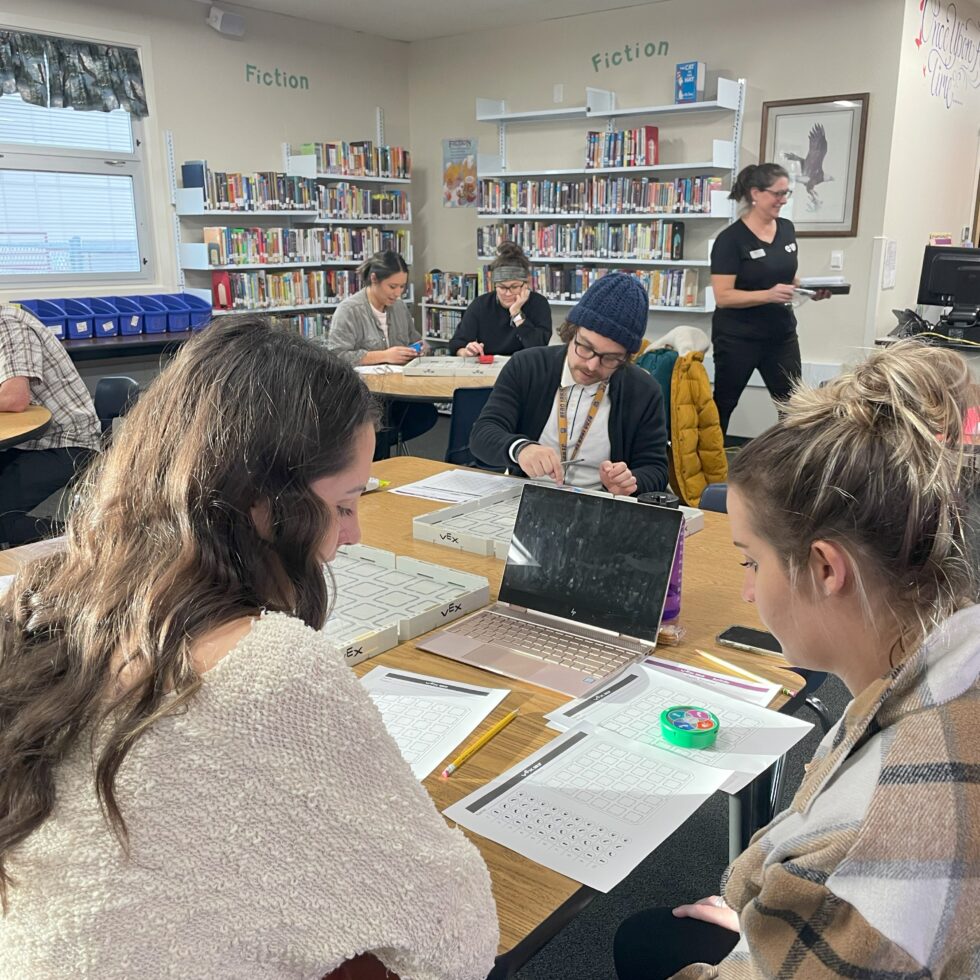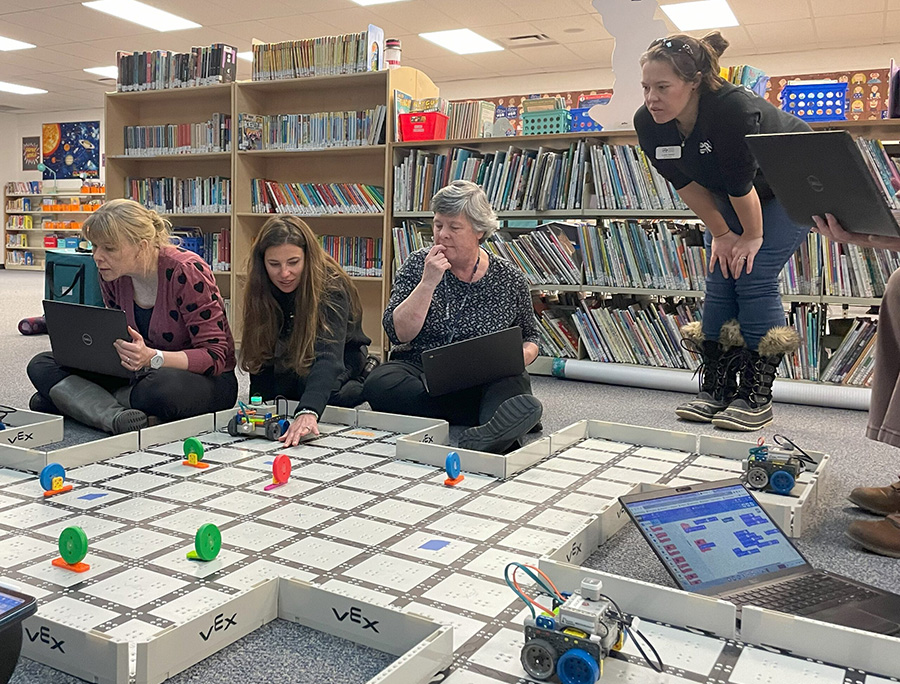By Jill Strawder
As the school year comes to an end, it is a great time to reflect on the progress and feedback of Nevada Robotics METRICS-trained educators. METRICS stands for Mentoring Educators Teaching Robotics and Innovation in Computer Science and is a Nevada Robotics designed professional development program that was first piloted in the 2022-2023 school year at Pleasant Valley and Mamie Towles elementary schools in Washoe County. The training utilizes Nevada Robotics Books and Bots curriculum and other original lessons to teach state standards in computer science, math, and ELA.
This school year, educators from Minden and Meneley elementary schools in Douglas County participated in the multi-session training program. In Washoe County, educators from Lemelson STEM Academy, Risley, Sarah Winnemucca, and Palmer elementary schools completed METRICS training. Additionally, METRICS was offered in Ely, and teachers from David E. Norman Elementary, McGill Elementary, and Learning Bridges completed this professional development.
METRICS educators report that 70 percent of their students who participate in a lesson where a robot is used as a learning tool engage at the highest level possible. Teachers also report that 87 percent of their students learned lesson objectives well to very well when using robots as tools. We know, and teachers report, that coding is focused work — and as one educator shared, “ it has to be done in the right order to work, (students have) to really listen to directions in order to code the robots correctly. (Using the robots for a learning game) was frustrating for some of my students, but because the activity was so engaging they kept on trying.” That is perseverance practice in action in the classroom.
Looking ahead to the 2024-2025 school year, Spring Creek Elementary School in Elko County is registered to become a METRICS school — all educators from PreK through 5th grade will be trained on how to use educational robots as tools to teach their students computer science, math, and ELA standards. In addition to learning how to teach these standards using robots, METRICS trainees will practice how to develop students’ growth in patience, perseverance, teamwork, and communication. A METRICS teacher recently shared that two of her students who typically argue with each other showed strong teamwork skills during a lesson where they were using robots. They “were so eager to learn that one allowed the other to teach him in order for them both to be successful.”

Here are just a few of the ways METRICS teachers report using robots this school year to teach state content standards.
- “We programmed robots using the metric system and worked on converting Meters to CM to MM.”
- “Today we used the robots to understand narrative text structure. The robots went up the story mountain while students used a graphic organizer to explain the details from the book we had finished as a class.”
- “We have been discussing Greek Root Words in class and this was used as a review activity. Students first designed their robots. I put up a question about if the sentence was correct or incorrect, so Hydr means water. Then they coded the robot to go to the correct box marked on the field.”
- “In stations, the students explored blends and digraphs, a design challenge with art tools, and a math activity involving place value. All students rotated between the stations.”
- “I marked the field with hundreds, counting up from 0 to 1,000. Students programmed the robots to hit each number in sequential order.”
- “We built the inclined planes. The kids measured distances and turned that information into graphs.”
- “We used the robot for SBAC prep and coded the robot to put a puff ball to answer the sample questions.”
School administrators who are interested in learning more about how teachers at their schools can participate in METRICS training should email AJ Long at ajlong@www-dev.dri.edu. METRICS is paid professional development that includes the use of robots, and free lessons, books, and materials.

